An Increasing Issue Through the Midwest
- Tar Spot is a foliar disease of corn that has been confirmed in several Midwest states and has the potential to impact yield potential.
- Disease development is favored by cool, humid conditions with extended periods of leaf wetness.
- If Tar Spot is suspected, a tissue sample should be sent to a laboratory for analysis to confirm the presence of Tar Spot.
Confirmed Counties with Tar Spot (2018-2023)

Tar Spot is a foliar disease of corn caused by the fungus Phyllachora maydis that has recently emerged as an economic concern for corn production in the Midwest. It first appeared in the U.S. in 2015 in Illinois and Indiana.
During the first few years in the U.S., Tar Spot appeared to be a minor cosmetic disease with minimal impact to corn yield. However, widespread outbreaks of severe Tar Spot in multiple states in 2018 proved that it has the potential to cause a substantial economic impact. Despite the generally lower disease severity, Tar Spot continued to expand its geographic range in subsequent years with new confirmations in parts of Indiana, Ohio, Michigan, Minnesota and Missouri (Figure 1).

Tar Spot Symptoms
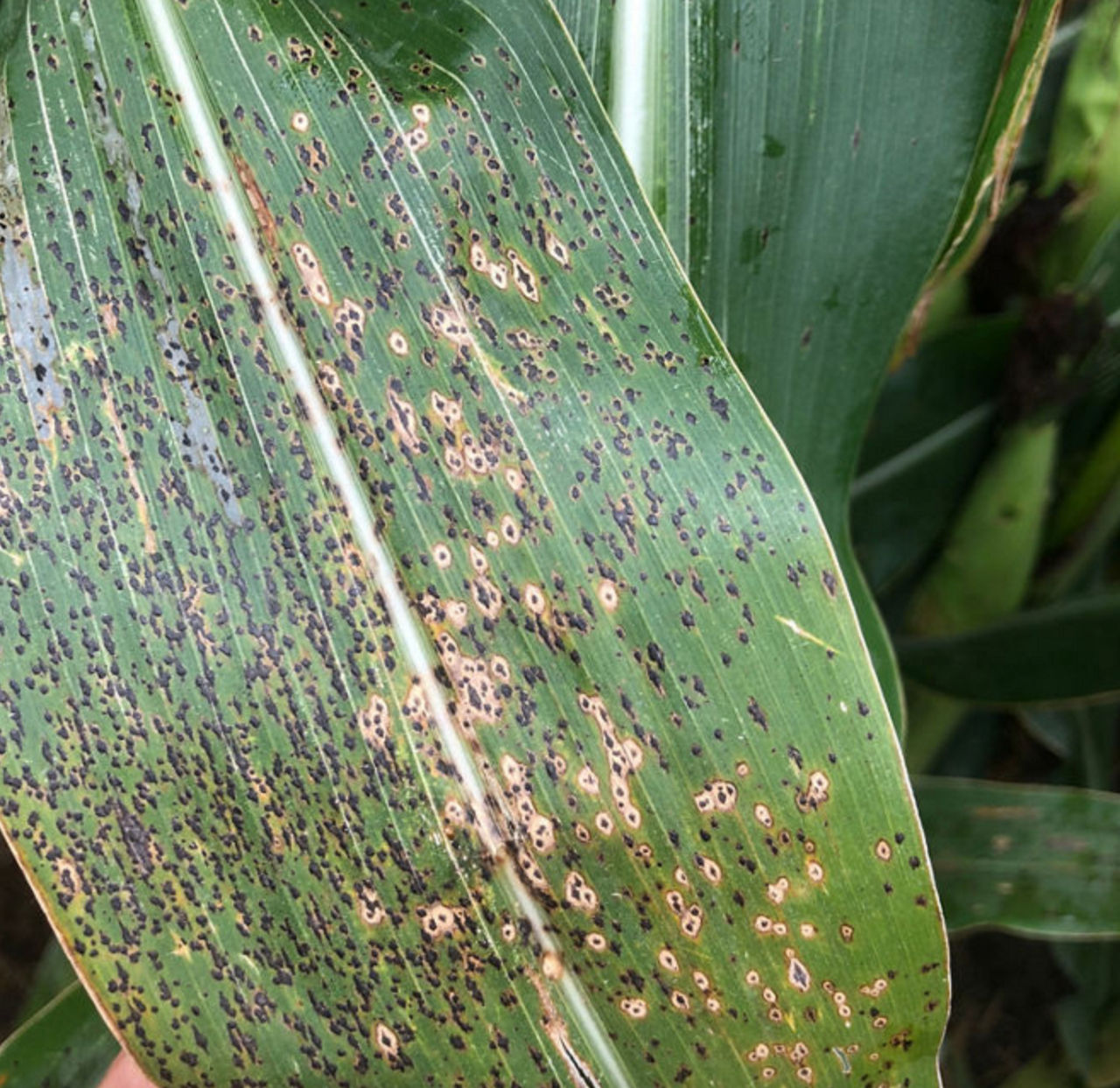
The symptoms of Tar Spot are distinctive and look like specks of tar on the leaf. Symptoms begin as oval to irregular bleached to brown lesions on leaves in which black spore- producing structures called ascomata form (Figure 2). Lesions protrude from the leaf surface, giving affected leaf areas a rough or bumpy feel.
Tan to brown lesions with dark borders surrounding ascomatum can also develop. These are known as "fisheye" lesions. In Latin America, where Tar Spot is more common, fisheye lesions are associated with another fungus, Monographella maydis, that forms a disease complex with P. maydis known as the Tar Spot complex. Although fisheye lesions have been observed in the U.S., M. maydis has not been confirmed.
Fisheye lesions may potentially be related to hybrid genetics, the genetics of the Tar Spot fungus, the environment, or some unknown factor. In any case, the cause of fisheye lesions observed in North American Tar Spot outbreaks is currently unknown; however, research on this disease is ongoing.
Many Spots of Tar Spot
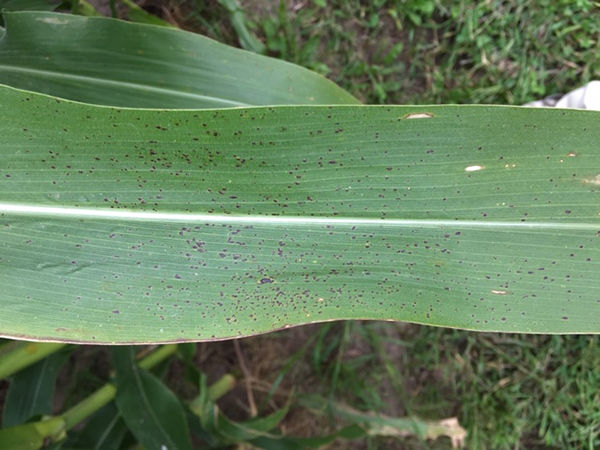
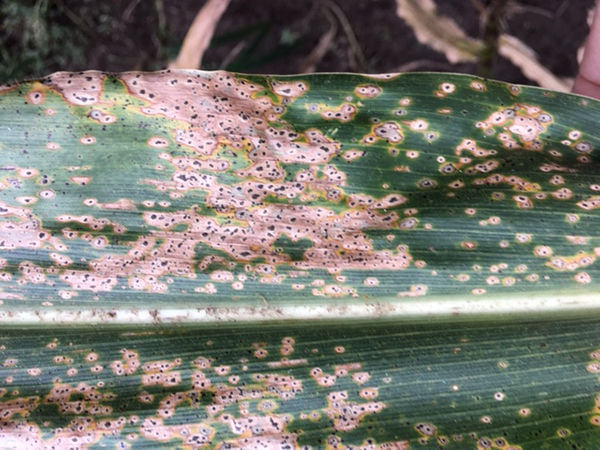

All images are taken by Bayer Crop Science employees
2021 Bayer External University Field Trials
Delaro® Complete Fungicide at R1 provided yield protection across 3 University trials with high Tar Spot pressure compared to the competition and untreated fields. Check out the results below to see how Delaro Complete keeps your operation moving forward when faced with Tar Spot.
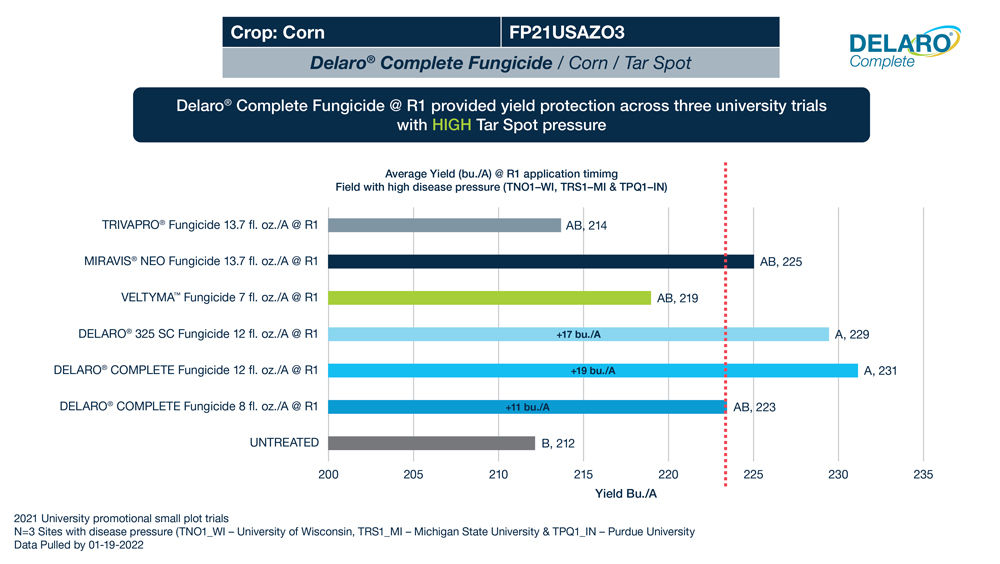
Application Timing
While fungicides have shown effectiveness in managing Tar Spot, timing of fungicide applications is important in successfully managing this disease.
Across years, application of a high quality, multiple mode of action fungicide such as Delaro® Complete Fungicide helped to protect yield potential against Tar Spot compared to the untreated control. Timing of fungicide application is critical based on when disease pressure occurs.
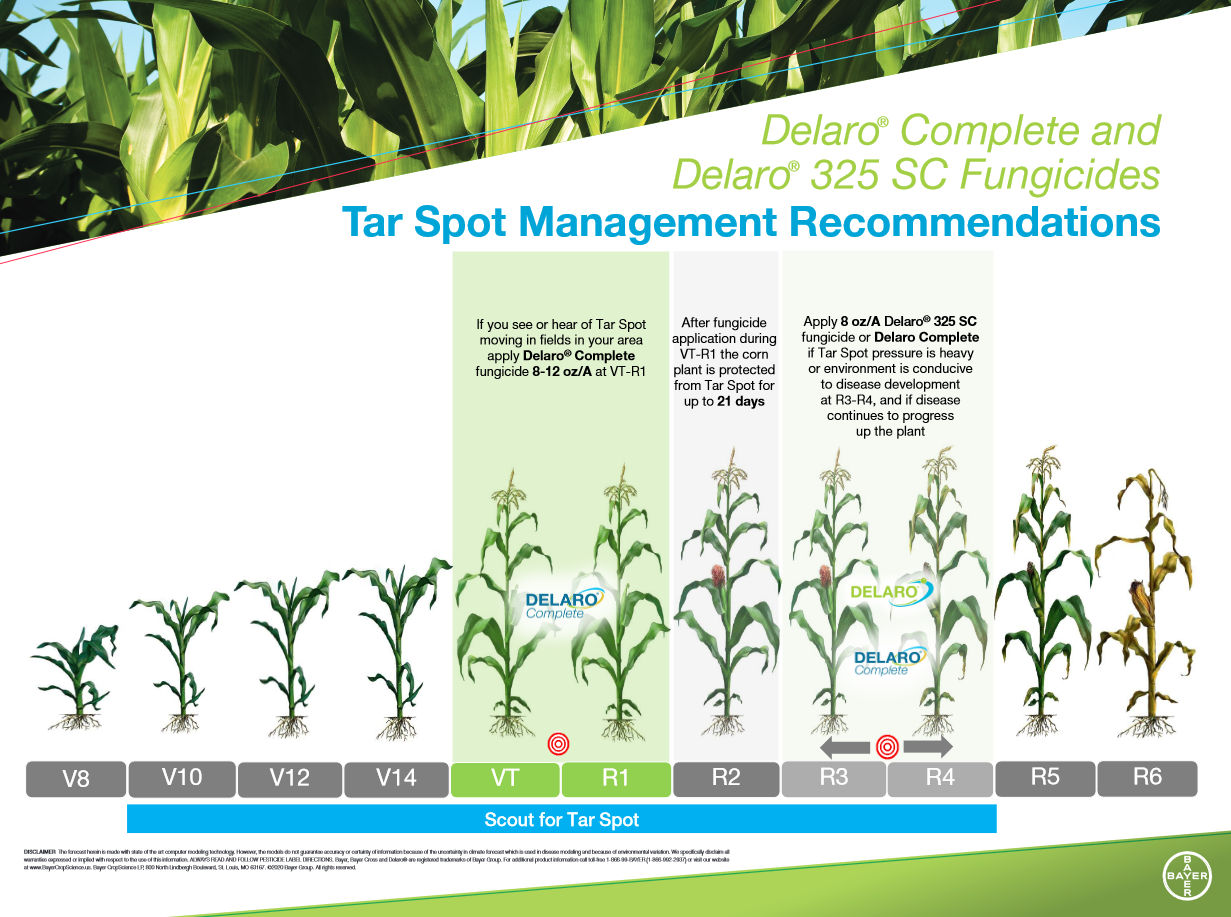
Early and continuous scouting in areas with previously reported disease is important for understanding disease pressure and planning timely fungicide applications if needed. Depending on when disease pressure occurs (early- to mid-season or later in the season), multiple fungicide sprays may be warranted.
DEKALB® Asgrow® brand technical agronomist says, “When considering fungicide options, Delaro® Complete fungicide from Bayer offers a broader spectrum of disease control and three modes of action residual. This chemistry combination will help to reliably boost photosynthesis and increase grain fill, leading to higher yield potential and resistance management.”
Videos:
- 2022 Tar Spot Identification in the Field (video)
- Understanding the Science Behind Tar Spot (video)
- Agronomy Sales Consultant, Tyler Graham, on Delaro® and Delaro® Complete (video)
- Technical Agronomist, Nicole Stecklein on Fungicide Decision (video)
- Tar Spot Discussions with Rachel Willis (video)
- Jim Donnelly on Tar Spot Disease in Northern Illinois (video)
- Matt Nelson on Tar Spot Impacts at Harvest (video)
- Agronomy After Dark with Nicole Stecklein (video)
- Tar Spot Disease Discussion with Jim Donnelly (video)